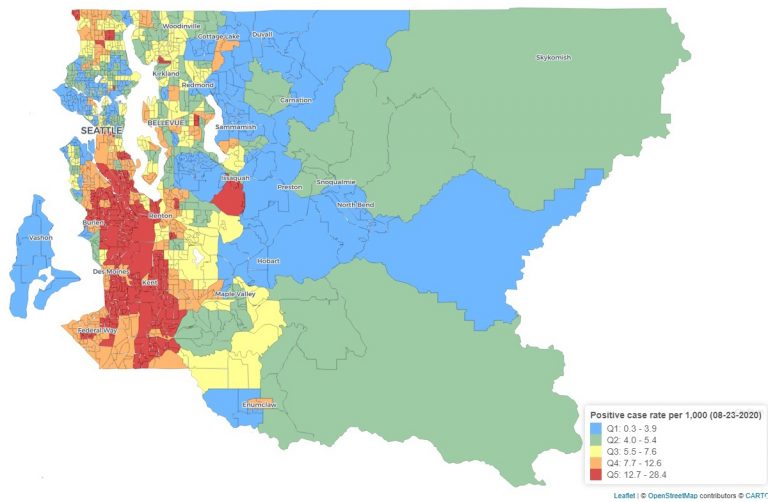Published on October 8, 2020

King County neighborhoods that are poorer and have higher levels of air pollution also tend to have higher rates of COVID-19 cases, according to new research by the UW Department of Environmental & Occupational Health Sciences (DEOHS) and collaborators.
These neighborhoods—mainly clustered in South King County—also have lower COVID-19 testing rates than the county average, as well as higher proportions of people of color and non-English speakers, the researchers found.
“We know there are health care, social and economic reasons for the inequities we are seeing with COVID-19,” said Stephanie Farquhar, clinical professor in the Department of Environmental and Occupational Health Science and the Department of Health Services, who is leading the project. “The data confirm what many of us in public health suspected as this began to roll out in January—that this virus is exacerbating other inequities.”
Based on their results, the team identified the need for more testing centers in these neighborhoods—an effort that is now underway by Public Health–Seattle & King County (PHSKC).
The research was funded by a COVID-19 rapid response grant from the UW Population Health Initiative.
The team, which includes Farquhar; BJ Cummings, the community engagement manager for the UW Interdisciplinary Center for Exposures, Diseases, Genomics and Environment (EDGE); Edmund Seto, DEOHS associate professor; and Esther Min, DEOHS research consultant, is studying air pollution, preexisting conditions, and access to COVID-19 testing throughout King County.
Continue reading at UW DEOHS.
Originally written by Deirdre Lockwood for DEOHS.